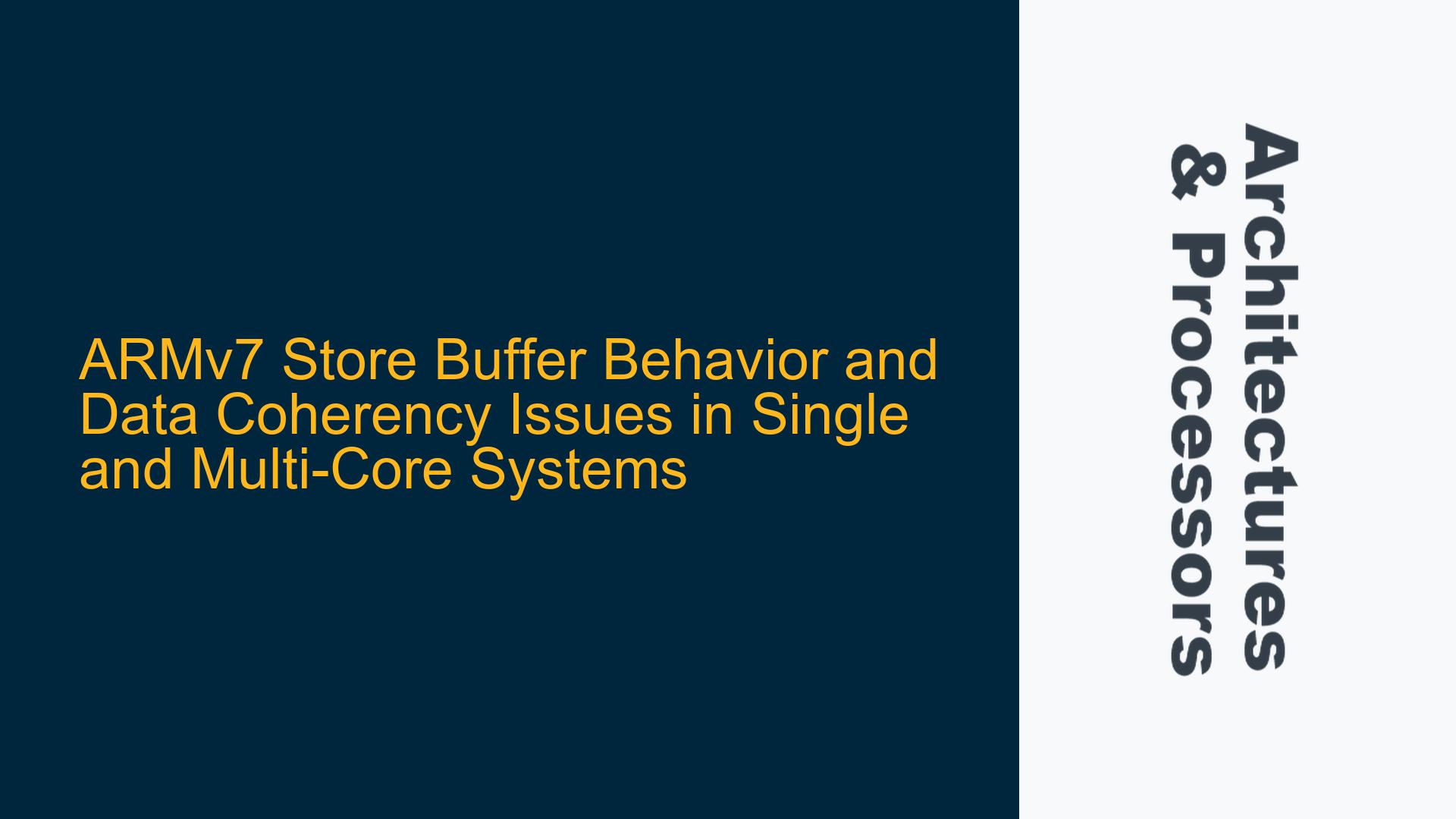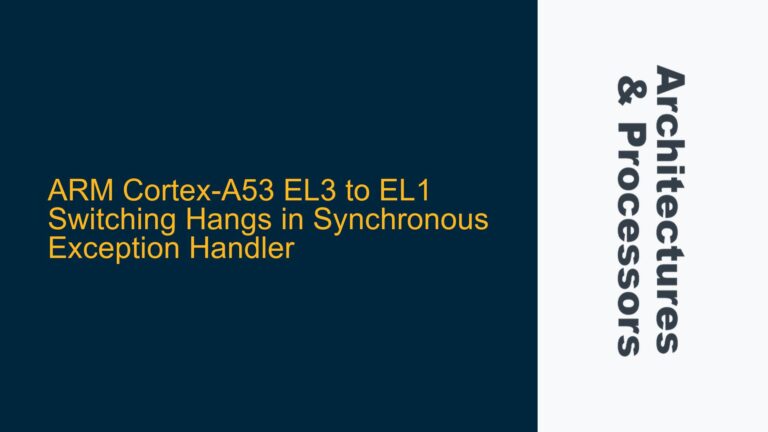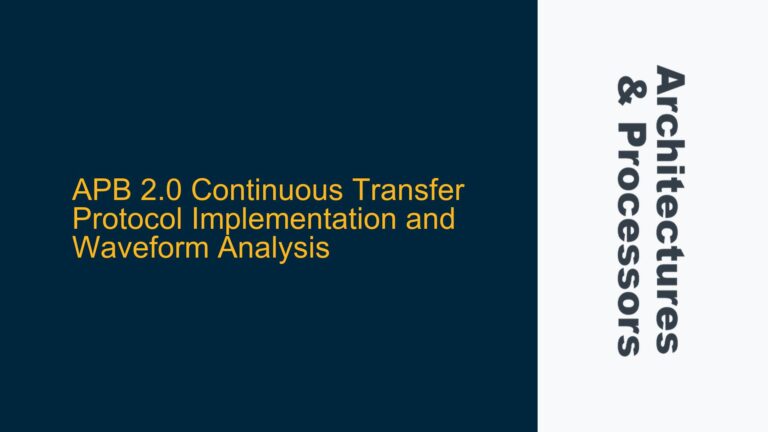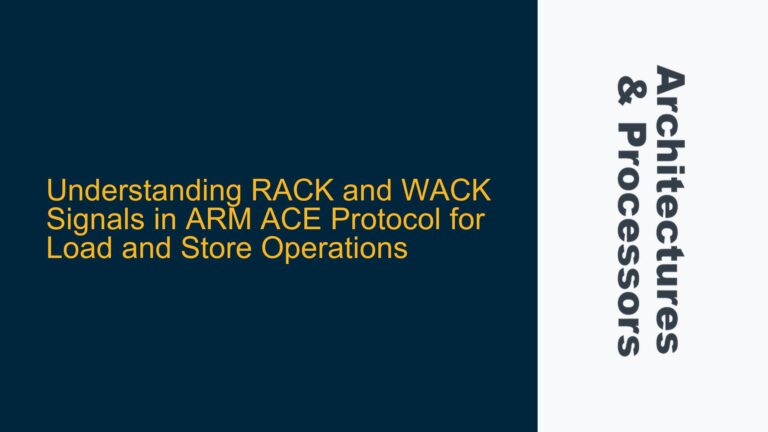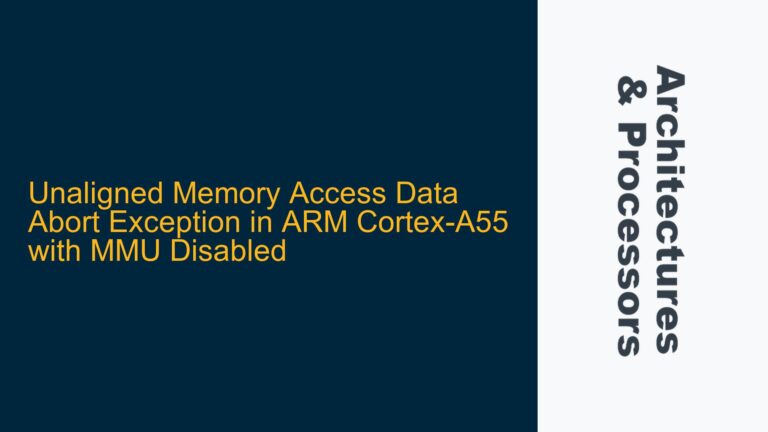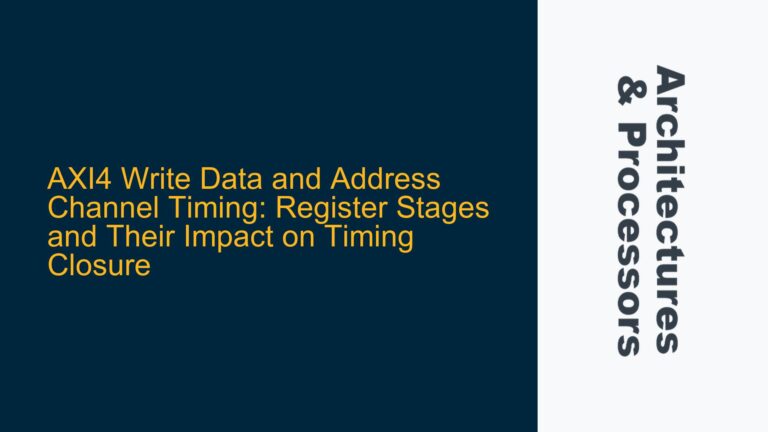ARMv7 Store Buffer Behavior and Its Impact on Data Coherency
The ARMv7 architecture employs a store buffer to optimize memory write operations by temporarily holding store requests before they are committed to the cache or main memory. This mechanism is crucial for improving performance, as it allows the processor to continue executing instructions without waiting for slower memory operations to complete. However, the presence of a store buffer introduces complexities in ensuring data coherency, particularly when a load operation follows a store operation. The core issue revolves around whether a load operation can return stale or unexpected data if the corresponding store operation has not yet been drained from the store buffer.
In ARMv7, the store buffer is designed to handle different types of memory, including Normal, Device, and Strongly-ordered memory. The behavior of the store buffer varies depending on the memory type. For instance, Strongly-ordered and Device memory accesses are strictly ordered, and the store buffer is drained before any subsequent load operations to these memory types. However, for Normal memory, the behavior is less stringent, and the store buffer may not be drained immediately, leading to potential data coherency issues.
The primary concern is whether a load operation can return incorrect data if it accesses a memory location that has a pending store operation in the store buffer. This scenario is particularly relevant in multi-core systems, where multiple processors may access shared memory locations. However, even in single-core systems, the store buffer’s behavior can lead to unexpected results if not properly managed.
Implementation-Defined Store Buffer Drainage and Data Visibility
The behavior of the store buffer in ARMv7 is implementation-defined, meaning that different ARM processors may handle store buffer drainage and data visibility differently. In single-core systems, the processor is expected to ensure that a load operation following a store operation returns the correct data, regardless of whether the store buffer is present or not. This is achieved by either reading from the store buffer or waiting for the store buffer to drain before performing the load operation.
However, the exact mechanism by which this is achieved is not specified by the ARM architecture. Some implementations may choose to read directly from the store buffer, while others may wait for the store buffer to drain before fetching data from memory. This implementation-defined behavior can lead to subtle differences in how data coherency is maintained across different ARM processors.
In multi-core systems, the situation becomes more complex. Each core has its own store buffer, and without proper synchronization, one core may read stale data from a memory location that has been updated by another core but not yet committed to main memory. This is where memory barriers, such as the Data Memory Barrier (DMB) instruction, come into play. Memory barriers ensure that all store operations before the barrier are committed to memory before any load operations after the barrier are executed.
The ARMv7 architecture provides several memory barrier instructions to manage data coherency in multi-core systems. These include the DMB, Data Synchronization Barrier (DSB), and Instruction Synchronization Barrier (ISB) instructions. Each of these instructions serves a specific purpose in ensuring that memory operations are properly ordered and that data coherency is maintained across multiple cores.
Ensuring Data Coherency with Memory Barriers and Cache Management
To ensure data coherency in ARMv7 systems, developers must carefully manage the store buffer and use memory barriers where necessary. In single-core systems, the store buffer’s behavior is generally transparent to the programmer, as the processor ensures that load operations return the correct data. However, in multi-core systems, explicit memory barriers are required to prevent data coherency issues.
When dealing with Normal memory, the store buffer may not be drained immediately, and a load operation may return stale data if a memory barrier is not used. To prevent this, developers should use the DMB instruction to ensure that all store operations before the barrier are committed to memory before any load operations after the barrier are executed. This is particularly important in multi-core systems, where multiple cores may be accessing shared memory locations.
For Strongly-ordered and Device memory, the store buffer is drained before any subsequent load operations, ensuring that data coherency is maintained. However, developers should still use memory barriers to ensure that memory operations are properly ordered, especially in multi-core systems.
In addition to memory barriers, developers should also consider the impact of cache management on data coherency. The ARMv7 architecture includes cache maintenance operations, such as cache invalidation and cleaning, which can be used to ensure that the cache is consistent with main memory. These operations are particularly important in multi-core systems, where each core has its own cache, and data coherency must be maintained across all caches.
When implementing cache maintenance operations, developers should use the appropriate cache maintenance instructions, such as the Invalidate Data Cache (DC IVAC) and Clean Data Cache (DC CVAC) instructions. These instructions ensure that the cache is properly invalidated or cleaned before performing memory operations, preventing data coherency issues.
In summary, the store buffer in ARMv7 systems introduces complexities in ensuring data coherency, particularly in multi-core systems. Developers must carefully manage the store buffer and use memory barriers and cache maintenance operations to ensure that data coherency is maintained. By understanding the behavior of the store buffer and the impact of memory barriers and cache management, developers can avoid subtle data coherency issues and ensure reliable system performance.
Detailed Analysis of Store Buffer Drainage Mechanisms
The store buffer in ARMv7 processors is a critical component that affects the timing and visibility of memory write operations. Understanding the mechanisms by which the store buffer drains is essential for diagnosing and resolving data coherency issues. The store buffer drains under specific conditions, such as when it becomes full, when a memory barrier instruction is executed, or when the processor encounters a load operation that requires data from a memory location with a pending store.
In the case of Normal memory, the store buffer may not drain immediately after a store operation. Instead, the processor may delay draining the store buffer to optimize performance. This delay can lead to situations where a subsequent load operation retrieves stale data if the store buffer has not yet been drained. To mitigate this, developers must use memory barriers to enforce the draining of the store buffer before critical load operations.
For Strongly-ordered and Device memory, the store buffer is drained before any subsequent load operations. This ensures that data coherency is maintained for memory types that require strict ordering. However, even in these cases, developers should use memory barriers to ensure that memory operations are properly ordered, especially in multi-core systems.
The ARMv7 architecture provides several memory barrier instructions, including the DMB, DSB, and ISB instructions. Each of these instructions serves a specific purpose in managing the store buffer and ensuring data coherency. The DMB instruction ensures that all memory operations before the barrier are completed before any memory operations after the barrier are executed. The DSB instruction ensures that all memory operations before the barrier are completed before any subsequent instructions are executed. The ISB instruction ensures that all instructions before the barrier are completed before any subsequent instructions are executed.
In addition to memory barriers, developers should also consider the impact of cache management on store buffer drainage. The ARMv7 architecture includes cache maintenance operations, such as cache invalidation and cleaning, which can be used to ensure that the cache is consistent with main memory. These operations are particularly important in multi-core systems, where each core has its own cache, and data coherency must be maintained across all caches.
When implementing cache maintenance operations, developers should use the appropriate cache maintenance instructions, such as the Invalidate Data Cache (DC IVAC) and Clean Data Cache (DC CVAC) instructions. These instructions ensure that the cache is properly invalidated or cleaned before performing memory operations, preventing data coherency issues.
In summary, the store buffer in ARMv7 systems introduces complexities in ensuring data coherency, particularly in multi-core systems. Developers must carefully manage the store buffer and use memory barriers and cache maintenance operations to ensure that data coherency is maintained. By understanding the behavior of the store buffer and the impact of memory barriers and cache management, developers can avoid subtle data coherency issues and ensure reliable system performance.
Practical Considerations for Store Buffer Management
When working with ARMv7 processors, developers must consider several practical aspects of store buffer management to ensure data coherency and optimal performance. These considerations include the use of memory barriers, cache management, and understanding the behavior of the store buffer in different memory types.
Memory barriers are essential for ensuring that memory operations are properly ordered, especially in multi-core systems. The DMB instruction should be used to enforce the draining of the store buffer before critical load operations. The DSB instruction should be used to ensure that all memory operations before the barrier are completed before any subsequent instructions are executed. The ISB instruction should be used to ensure that all instructions before the barrier are completed before any subsequent instructions are executed.
Cache management is also critical for ensuring data coherency in ARMv7 systems. Developers should use cache maintenance operations, such as cache invalidation and cleaning, to ensure that the cache is consistent with main memory. The Invalidate Data Cache (DC IVAC) and Clean Data Cache (DC CVAC) instructions should be used to ensure that the cache is properly invalidated or cleaned before performing memory operations.
Understanding the behavior of the store buffer in different memory types is also important. For Normal memory, the store buffer may not drain immediately after a store operation, and developers must use memory barriers to enforce the draining of the store buffer before critical load operations. For Strongly-ordered and Device memory, the store buffer is drained before any subsequent load operations, but developers should still use memory barriers to ensure that memory operations are properly ordered.
In summary, developers must carefully manage the store buffer and use memory barriers and cache maintenance operations to ensure data coherency in ARMv7 systems. By understanding the behavior of the store buffer and the impact of memory barriers and cache management, developers can avoid subtle data coherency issues and ensure reliable system performance.
Conclusion
The store buffer in ARMv7 processors is a powerful tool for optimizing memory write operations, but it introduces complexities in ensuring data coherency, particularly in multi-core systems. Developers must carefully manage the store buffer and use memory barriers and cache maintenance operations to ensure that data coherency is maintained. By understanding the behavior of the store buffer and the impact of memory barriers and cache management, developers can avoid subtle data coherency issues and ensure reliable system performance.
In single-core systems, the store buffer’s behavior is generally transparent to the programmer, as the processor ensures that load operations return the correct data. However, in multi-core systems, explicit memory barriers are required to prevent data coherency issues. Developers should use the DMB, DSB, and ISB instructions to enforce the draining of the store buffer and ensure that memory operations are properly ordered.
Cache management is also critical for ensuring data coherency in ARMv7 systems. Developers should use cache maintenance operations, such as cache invalidation and cleaning, to ensure that the cache is consistent with main memory. The Invalidate Data Cache (DC IVAC) and Clean Data Cache (DC CVAC) instructions should be used to ensure that the cache is properly invalidated or cleaned before performing memory operations.
By carefully managing the store buffer and using memory barriers and cache maintenance operations, developers can ensure data coherency and optimal performance in ARMv7 systems. Understanding the behavior of the store buffer and the impact of memory barriers and cache management is essential for avoiding subtle data coherency issues and ensuring reliable system performance.
